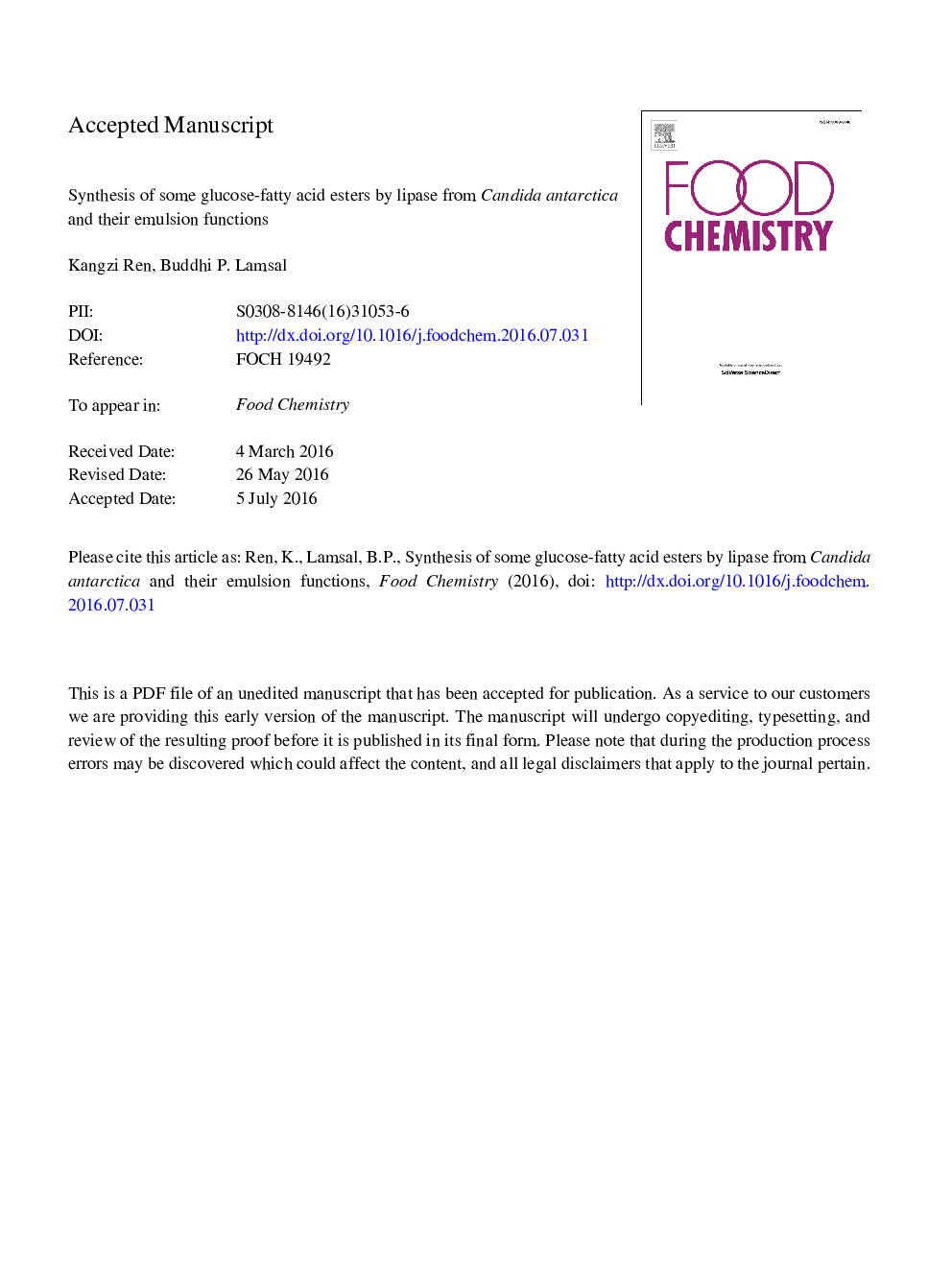| Article ID | Journal | Published Year | Pages | File Type |
|---|---|---|---|---|
| 7587213 | Food Chemistry | 2017 | 34 Pages |
Abstract
The synthesis of glucose esters with palmitic acid, lauric acid and hexanoic acid using lipase enzyme was studied and their emulsion functionality in oil-in-water system were compared. Reactions at 3:1 M ratio of fatty acids-to-glucose had the highest conversion percentages (over 90% for each of the fatty acid). Initial conversion rate increased as substrate solubility increased. Ester bond formation was confirmed by nuclear magnetic resonance technique that the chemical shifts of glucose H-6 and α-carbon protons of fatty acids in the ester molecules shifted to the higher fields. Contact angle of water on esters' pelleted surface increased as the hydrophobicity increased. Glucose esters' and commercial sucrose esters' functionality as emulsifiers were compared. Glucose esters delayed, but did not prevent coalescence, because the oil droplets diameter doubled during 7 days. Sucrose esters prevented coalescence during 7 days since the droplets diameter did not have significant change.
Related Topics
Physical Sciences and Engineering
Chemistry
Analytical Chemistry
Authors
Kangzi Ren, Buddhi P. Lamsal,
